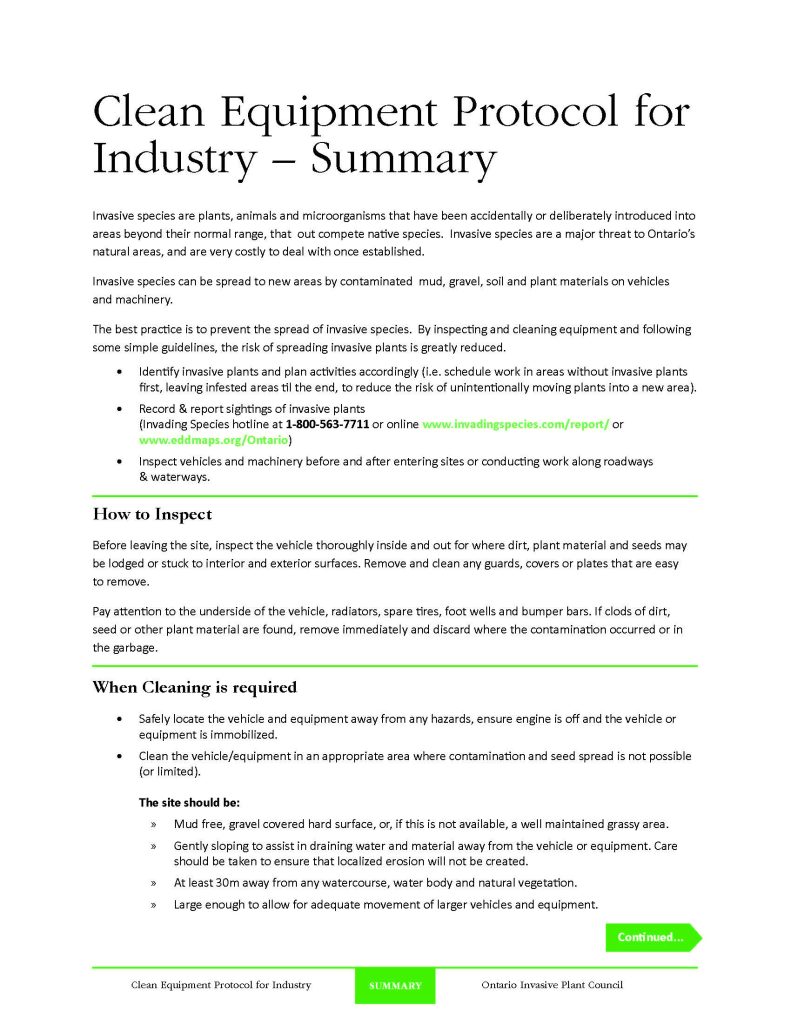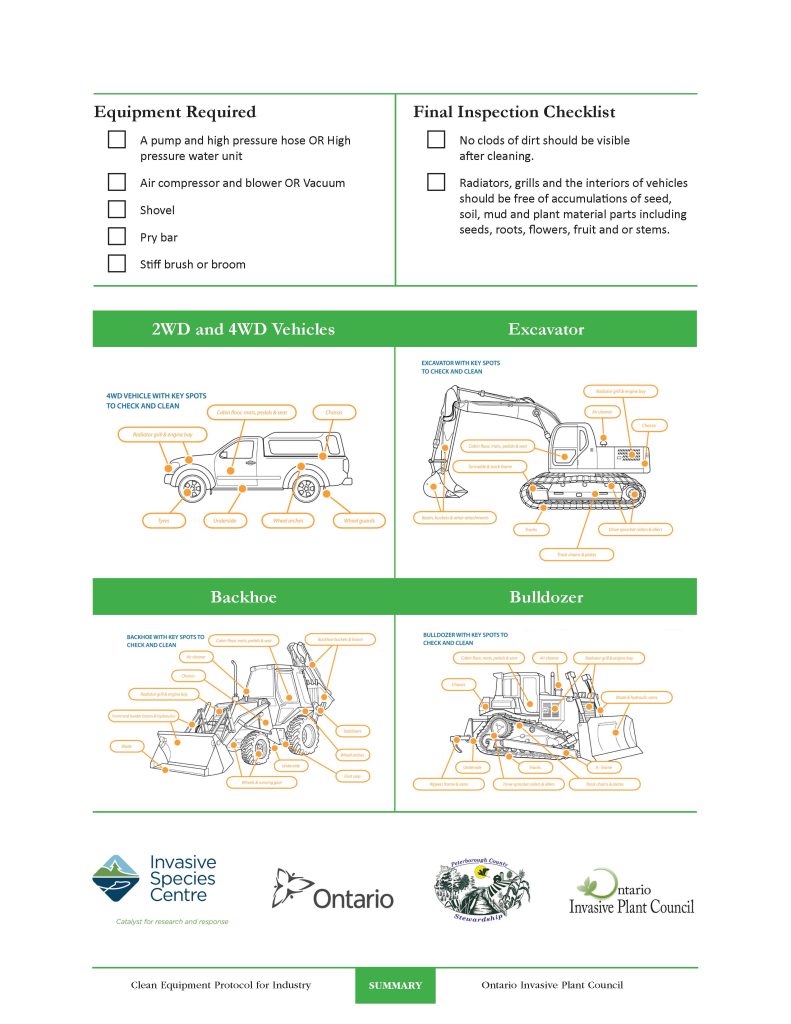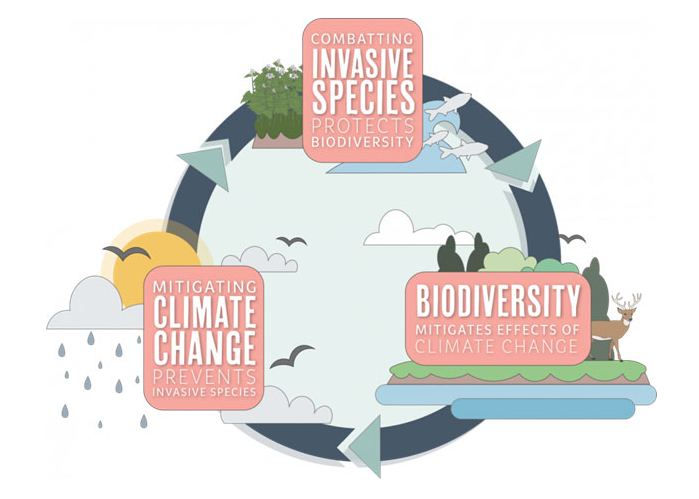Invasive Species
Keywords: invasive, environment, economy, community, competition, deteriorate, ecosystems.
“Climate change can accelerate the introduction and spread of invasive species. Together, invasive species and climate change reduce ecosystem resilience and negatively impact biodiversity“. (Invasive Species Centre, 2024).
The Invasive Species Centre (2024) reports that “the effects of climate change on invasive species can include:
- More frequent extreme weather events cause stress to native species and create opportunities for invasive species movement.
- Melting sea ice opens new shipping routes and pathways for invasive species to spread.
- A changing climate can affect species’ life cycles and their ability to spread into new areas.
- Increased carbon dioxide (C02) in the atmosphere leads to higher C02 uptake in plants, which can increase herbicide resistance”.
Image source: Invasive Species Centre
In recent decades, provincial governments have been working to increase industry and public awareness about the negative impacts invasive species have on the environment, economy, and communities across Canada.
“Invasive plants are harmful non-native trees, shrubs, and herbaceous plants that are spread by global trade, human and animal transport, and gardening. They invade forests and prevent native plants from growing, which can have negative impacts on how ecosystems function, on native vegetation, and on native wildlife. Many invasive plants cannot be used by wildlife for food which puts grazing pressure on the few native plants that remain. Invasive plants also pose threats to agriculture due to their ability to spread quickly, out-compete crop and forest plants, and deteriorate soil quality. Once they have taken hold, the thick spread of invasive plants makes them costly and time-consuming to remove” (Invasive Species Centre, n.d.).
Invasive species degrade natural ecosystems, impact agriculture practices, interfere with forest productivity, and have social, aesthetic, and economic impacts.
The Canadian Council on Invasive Species (2023) states the following:
Degradation of Natural Ecosystems
“Natural areas such as forests, prairies, wetlands and lakes provide many ecosystem services and benefits. Natural areas provide shelter and food for wildlife, remove pollutants from air and water, produce oxygen and provide valuable recreational and educational opportunities. Invasive species threaten and can alter our natural environment and habitats and disrupt essential ecosystem functions. Invasive plants specifically displace native vegetation through competition for water, nutrients, and space. Invasive species threaten many rare and endangered species and now those species are at risk of extinction. Once established, invasive species become costly and difficult to eradicate. Often, the impacts are irreversible to the local ecosystem. Once established, invasive species can:
- reduce soil productivity
- impact water quality and quantity
- degrade range resources and wildlife habitat
- threaten biodiversity
- alter natural fire regimes
- introduce diseases
Impact on Agriculture
Invasive plants can have a wide range of impacts on the agricultural industry. Invasive plants can act as new or additional hosts for new or existing crop diseases and crop pests, they can cause reductions in crop yields and may require increased use of pesticides to control them. This increases costs for farmers and reduces crop values. Estimated crop losses in BC agriculture industry of over $50 million annually. Species such as knapweed infest rangelands and reduce forage quality. Many other species out-compete desired species in cultivated fields (Source: BC Ministry of Agriculture, Food and Fisheries. 1998. Integrated weed management—an introductory manual). The estimated annual economic impact of invasive plants on Canadian agriculture is $2.2 billion (Environment Canada, 2010).
Interference with Forest Productivity
Invasive species, specifically invasive plants, can interfere with forest regeneration and productivity through direct competition with tree seedlings, resulting in reduced density and slowed growth rate of tree saplings. Reduction in forest regeneration and productivity results in the loss of wildlife habitat, and decreases the diversity of a stand, making it more vulnerable to insects and disease.
Social and Aesthetic Impacts
When established in crops or natural areas, invasive plants and/or species can result in:
- lost income
- reduced water quality and quantity (increased erosion and sedimentation)
- reduced property values
- damage to private property and infrastructure
- loss of traditional food and medicinal plants
- reduced land and water recreational opportunities
- increased control and management costs
- export and import trade restrictions imposed
Some invasive plants, like giant hogweed (Heracleum mantegazzianum) and wild parsnip (Pastinaca sativa), cause human health concerns because their sap is toxic to skin. Other plants can cause physical injuries to the body; common buckthorn (Rhamnus cathartica) branches end in a short, sharp thorn which may inflict injury. Human safety may also be impacted by fast-growing invasive plants. For example, Phragmites australis (hereafter referred to as Introduced Phragmites) grows large and rapidly and may reduce visibility at rights of ways, increasing the risk of car accidents. Dead, dry stalks of Introduced Phragmites are also highly combustible and can become a fire hazard.
Natural areas in municipalities support a wealth of recreational activities including hunting, fishing, swimming, hiking, bird watching, and mountain biking. Invasive plants that invade recreational areas often reduce the area’s attractive and enjoyable qualities. For example, invasive plants may reduce native plant biodiversity, affecting the number of songbirds in the area; walking through dense vegetation can prove difficult; and popular swimming areas may become unusable with the presence of invasive aquatic plants. Seeds and other plant parts can hitch rides on hiking boots, clothing, pets, birds and vehicles, resulting in new infestations, potentially over great distances.
Economic Impacts
Invasive plants can have a large economic impact on individual landowners and municipalities. A recent study shows that property values for shoreline residences in Vermont affected with Eurasian water-milfoil (Myriophyllum spicatum) were down as much as 16.4 % (OMNRF, 2012). Due to the explosion of leafy spurge (Euphorbia esula), Manitoba has experienced a $30 million reduction in land values (CFIA, 2008). Leafy spurge infests 340,000 acres of land in Manitoba, costing taxpayers an estimated $19 million per year to protect grazing land, public land, and rights-of-way (CFIA, 2008). In Ontario, the MNRF has been involved with invasive Phragmites control pilot projects since 2007 and to date control costs range between $865 and $1,112 per hectare (OMNRF, 2012). Invasive species have an impact on approximately 20% of Species at Risk in Ontario (OMNRF, 2012).
Invasive plants directly affect municipalities with reforestation projects and recreational trails. They increase management costs (e.g. project planning and monitoring) and they increase operational costs (e.g. mowing, pruning and hand pulling). They also complicate reforestation projects as they need to first be removed, and then the gaps created through removal must be addressed by using large, potted plant stock, or additional site maintenance to prevent the risk of re-invasion.
The economic impact of invasive species in Canada is significant. According to Environment and Climate Change Canada:
- The estimated annual cumulative lost revenue caused by just 16 invasive species is between $13 to $35 billion.
- Invasive species that damage the agricultural and forestry industries result in an estimated $7.5 billion of lost revenue annually”.
Invasive Species Management for Horticulturalists
Landscape horticulturalists play a crucial role in restoring and maintaining ecological sustainability by removing and preventing the spread of invasive species. By taking these proactive measures, horticulturists can help preserve the ecological balance and ensure the long-term health of our natural environments.
- Education: one of the most effective strategies that we can use is to educate ourselves and our clients about the dangers of invasive species and the importance of choosing native plant species or non-invasive species.
- Monitor: we can also regularly monitor landscapes for signs of invasive species and quickly respond to any outbreaks by removing or controlling them before they can spread.
- Sanitation: we can implement proper sanitation practices to prevent the accidental spread of invasive species through equipment or plant material.
- Advocacy: we can work with local governments and organizations to advocate for policies that restrict the import and sale of invasive plant species and promote the use of native or non-invasive plants instead.
Teaching and Learning Examples for Instructors
Assignment: Invasive Species Management Plan for Local Pest, Disease, or Weed. This assignment was created by Chatgpt and can be adapted to your region and class learning outcomes.
Here is an example of a clean equipment protocol to reduce the spread of invasive species from the Ontario Invasive Plant Council (2023) to use as an example when building a clean equipment protocol with students in your class.


Reflect

Please use the following questions to guide your reflection:
- What are the major invasive species in your region, and what is their impact on the regional ecosystem?
- How can you identify the major invasive species in your region, and what environment do they grow in?
- What climate change impacts are speeding up or creating the vulnerability for invasive species to occur in your area?
- How can landscape horticulturalists stop the spread of invasive species in your region through their work?
- What resources are available in your region to raise awareness of invasive species among industry or the public?



Feedback/Errata